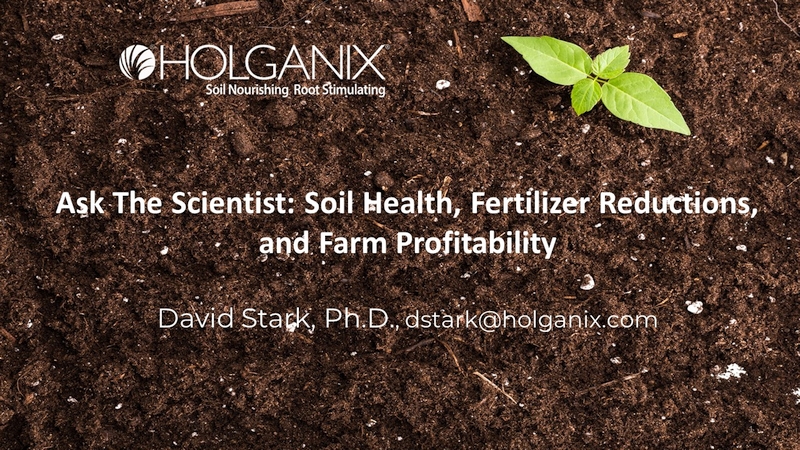How Erratic Weather Means Greater Focus on Nutrient Technologies, Soil Sampling
Approaching nutrients following a unicorn year like 2019 carries some important considerations.
As North American long-term soil fertility studies have shown, up to 60% of yield is dependent on soil fertility.
The key takeaway that Curt Woolfolk, Mosaic Senior Agronomist, has been giving to retailers and crop consultants while out traveling the last couple of months is to not assume that the soil is fully loaded on nutrients. Take a close look at your yield monitor data off the combine in 2019, then go back to your archives from the last five years in order to attain a more accurate picture.
For soil sampling, he reminds that pulling a deeper soil core for the more mobile nutrients, particularly nitrogen, sulfur, boron, and chloride, is key — in the range of 0 to 12 or 0 to 24 inches will give you a better indication of where nutrients are within your rooting zone, he says.
“Wet planting seasons, similar to 2019, increase the probability of leaching mobile nutrients, deeper in the soil profile than what crops can access,” Woolfolk tells CropLife®. In training, he emphasizes the fact that in years of erratic weather events, it is more important than ever to review the proper placement of the fertilizer, the timing of that fertilizer application, the fertilizer source, and appropriate rate that helps us maximize yield while being respectful of the environment. “As we think about 2019 and the lessons learned, you open yourselves to potentially having run-off or leaching.”
Woolfolk recommends applying products that have multiple nutrients, or multiple forms of the nutrients built into the fertilizer granule — and being timely with tillage once the fertilizer application has occurred.
“We spend a lot of time and money evaluating our seed technologies, herbicides, fungicides, and insecticides, and too often we spend enough time and money on technology and not enough time thinking about fertilizer technologies. People don’t typically put those two words together,” he explains. Two products he mentions from Mosaic could fit the bill for your fields this year: MicroEssentials SZ and Aspire.
More On Soil Sampling, Dialing Into Specifics
Randy Dowdy is as famed in the ag world for his record-breaking soybean yields as he is for how he’s achieved them: Through extensive soil and tissue testing, to the tune of 13 to 14 times a year.
“We’re big into the law of the minimum: It says that yield is proportionate to the most limiting nutrient. It really doesn’t matter how much nitrogen and phosphorus you have in excess if boron or molybdenum or zinc is the limiting factor,” and frequently, micronutrients are often exactly that, he told CropLife in an interview at the 2020 Commodity Classic in San Antonio, TX. “That’s part of what we have been challenging the industry with: We’ve done the work on N-P-K. We understand it takes a lot of it. Now teach us what it takes from these other nutrients to make a bushel of corn and more importantly, what do the levels need to be in the plant?”
Boron is a top priority, and multiple applications are made typically all season long on Dowdy’s acres. “We see boron that’s low, we’ll make a foliar application,” he says. “It tells nitrogen how to behave in the plant, so it’s important. You don’t want that to be your limiting factor.”
Corn fields too, have leached higher-than-typical levels of boron due to the extraordinarily wet weather. More than 76% of samples that WinField United tested nationally in corn in 2019 were deficient in boron, according to WinField United Agronomy Manager Jason Haegele.
Limiting amounts of boron can directly impact the ability of the plant to pollinate and set kernels effectively, and it’s something people will keeping an eye on in 2020 with lingering wet soils.
Yet, trying to pin yield loss on any one specific nutrient deficiency can be tricky, Haegele says, as interactions with other nutrients or other limiting factors like insects, disease, and weeds could be occurring in the field at the same time.
“When we get to final steps that help us fine-tune yield, it’s about a systems approach, where we’re doing a lot of things in combination as opposed to focusing on one specific factor,” he explains. Integral to a systems approach is tissue testing to gauge micronutrient levels at about four key times during the season: Early in the season in the V4 to V5 stages, sometime during the later vegetative growth stages when the plant is taking up large quantities of nitrogen, potassium, and micronutrients, then around tasseling and silking. The last testing comes during grain fill.
Dialing into the specifics of your farm, says Brian Haschemeyer, Director of Discovery and Innovation, BRANDT, will get you the best results. Timing, too, is just as important as the nutrient technology itself.
“People say, ‘I want a micronutrient program.’ But a program that works in central Illinois may not work very well in Virginia because they might have more manganese deficiencies, or in Indiana where they have a pocket of iron deficiencies,” Haschemeyer told CropLife at Commodity Classic, adding, “What I can tell you, is what the micronutrient is doing in the crop and if you’re low, give you a recommendation on the application timing — but you can’t just take a one-size-fits-all program. You have to have key advisers and agronomists.”






